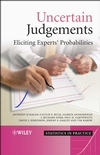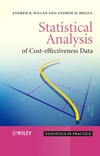Yuval Z Flicker (The Ohio State University, USA)
AUTOMORPHIC REPRESENTATIONS OF LOW RANK GROUPS
 The area of automorphic representations is a natural
continuation of studies in number theory and modular forms. A
guiding principle is a reciprocity law relating the infinite
dimensional automorphic representations with finite dimensional
Galois representations. Simple relations on the Galois side
reflect deep relations on the automorphic side, called "liftings".
This book concentrates on two initial examples: the symmetric
square lifting from SL(2) to PGL(3), reflecting the 3-dimensional
representation of PGL(2) in SL(3); and basechange from the
unitary group U(3, E/F) to GL(3, E), [E : F] = 2.
The area of automorphic representations is a natural
continuation of studies in number theory and modular forms. A
guiding principle is a reciprocity law relating the infinite
dimensional automorphic representations with finite dimensional
Galois representations. Simple relations on the Galois side
reflect deep relations on the automorphic side, called "liftings".
This book concentrates on two initial examples: the symmetric
square lifting from SL(2) to PGL(3), reflecting the 3-dimensional
representation of PGL(2) in SL(3); and basechange from the
unitary group U(3, E/F) to GL(3, E), [E : F] = 2.
The book develops the technique of comparison of twisted and
stabilized trace formulae and considers the gFundamental Lemmah
on orbital integrals of spherical functions. Comparison of trace
formulae is simplified using "regular" functions and
the "lifting" is stated and proved by means of
character relations.
This permits an intrinsic definition of partition of the
automorphic representations of SL(2) into packets, and a
definition of packets for U(3), a proof of multiplicity one
theorem and rigidity theorem for SL(2) and for U(3), a
determination of the self-contragredient representations of PGL(3)
and those on GL(3, E) fixed by transpose-inverse-bar. In
particular, the multiplicity one theorem is new and recent.
There are applications to construction of Galois representations
by explicit decomposition of the cohomology of Shimura varieties
of U(3) using Deligne's (proven) conjecture on the fixed point
formula.
Contents:
On the Symmetric Square Lifting:
Functoriality and Norms
Orbital Integrals
Twisted Trace Formula
Total Global Comparison
Applications of a Trace Formula
Computation of a Twisted Character
Automorphic Representations of the Unitary Group U(3, E/F):
Local Theory
Trace Formula
Liftings and Packets
Zeta Functions of Shimura Varieties of U(3):
Automorphic Representations
Local Terms
Real Representations
Galois Representations
Readership: Graduate students and researchers in number theory,
algebra and representation theory.
500pp Pub. date: Jun 2006
ISBN 981-256-803-4
Michael Greenacre / Universitat Pompeu Fabra, Barcelona, Spain
Jorg Blasius / University of Bonn, Germany
Multiple Correspondence Analysis and Related Methods
 Series: Chapman & Hall/CRC Statistics in the Social and Behavioral
Scien Volume: 1
Series: Chapman & Hall/CRC Statistics in the Social and Behavioral
Scien Volume: 1
ISBN: 1584886285
Publication Date: 6/23/2006
Number of Pages: 608
Provides the first comprehensive overview of the theory and
applications of MCA
Begins with two chapters that gently introduce the method to
those with less experience in the field
Adopts a practical approach with many worked examples
Includes applications in survey research, social sciences,
marketing, health economics, and biomedical research
Features software notes in each chapter, an appendix with
computational details, and R programs for applying methods
As a generalization of simple correspondence analysis, multiple
correspondence analysis (MCA) is a powerful technique for
handling larger, more complex datasets, including the high-dimensional
categorical data often encountered in the social sciences,
marketing, health economics, and biomedical research. Until now,
however, the literature on the subject has been scattered,
leaving many in these fields no comprehensive resource from which
to learn its theory, applications, and implementation.
Multiple Correspondence Analysis and Related Methods gives a
state-of-the-art description of this new field in an accessible,
self-contained, textbook format. Explaining the methodology step-by-step,
it offers an exhaustive survey of the different approaches taken
by researchers from different statistical "schools" and
explores a wide variety of application areas. Each chapter
includes empirical examples that provide a practical
understanding of the method and its interpretation, and most
chapters end with a "Software Note" that discusses
software and computational aspects. An appendix at the end of the
book gives further computing details along with code written in
the R language for performing MCA and related techniques. The
code and the datasets used in the book are available for download
from a supporting Web page.
Providing a unique, multidisciplinary perspective, experts in MCA
from both statistics and the social sciences contributed chapters
to the book. The editors unified the notation and coordinated and
cross-referenced the theory across all of the chapters, making
the book read seamlessly. Practical, accessible, and thorough,
Multiple Correspondence Analysis and Related Methods brings the
theory and applications of MCA under one cover and provides a
valuable addition to your statistical toolbox.
Table of contents
Anthony O'Hagan, Caitlin E. Buck, Alireza Daneshkhah, Richard Eiser,
Paul Garthwaite, David Jenkinson, Jeremy Oakley, Tim Rakow
Uncertain Judgements: Eliciting Experts' Probabilities
 ISBN: 0-470-02999-4
ISBN: 0-470-02999-4
Hardcover
338 pages
September 2006
An aim of much statistical research is to wring as much from data
as is possible. Improved usage of expert opinion can add
significantly more information than a slight improvement in
efficiency through better data analysis techniques. This book
presents a range of tried and tested elicitation methods to
enable statisticians to get make the most of expert opinion
An elicitation method forms a bridge between an expertfs
opinion and an expression of these points in a statistically
useful form. This book, written by a group of expert
statisticians and psychologists provides an introduction to the
subject and a detailed overview of the existing literature. The
book guides the reader through the design of an elicitation
method and details examples from a cross section of literature in
the statistics, psychology, engineering and health sciences
disciplines.
Table of Contents
Andrew R. Willan, Andrew H. Briggs
Statistical Analysis of Cost-Effectiveness Data
 ISBN: 0-470-85626-2
ISBN: 0-470-85626-2
Hardcover
210 pages
September 2006
The statistical analysis of cost-effectiveness data is becoming
increasingly important within health and medical research.
Statistical Analysis of Cost-Effectiveness Data provides a
practical book that synthesises the huge amount of research that
has taken place in the area over the last two decades.
Comprising an up-to-date overview of the statistical analysis of
cost-effectiveness data, the book is supported by numerous worked
examples from the authorfs own experience. It has been written
in a style suitable for medical statisticians and health care
professionals alike. Key features include:
an overview of statistical methods used in the analysis of cost-effectiveness
data.
coverage of Bayesian methodology.
illustrated throughout by worked examples using real data.
suitability for health care professionals with limited
statistical knowledge.
discussion of software used for data analysis.
An essential reference for biostatisticians and health economists
engaged in cost-effectiveness analysis of health-care
interventions, both in academia and industry. Also of interest to
graduate students of biostatistics, public health and economics.
Table of Contents
 The area of automorphic representations is a natural
continuation of studies in number theory and modular forms. A
guiding principle is a reciprocity law relating the infinite
dimensional automorphic representations with finite dimensional
Galois representations. Simple relations on the Galois side
reflect deep relations on the automorphic side, called "liftings".
This book concentrates on two initial examples: the symmetric
square lifting from SL(2) to PGL(3), reflecting the 3-dimensional
representation of PGL(2) in SL(3); and basechange from the
unitary group U(3, E/F) to GL(3, E), [E : F] = 2.
The area of automorphic representations is a natural
continuation of studies in number theory and modular forms. A
guiding principle is a reciprocity law relating the infinite
dimensional automorphic representations with finite dimensional
Galois representations. Simple relations on the Galois side
reflect deep relations on the automorphic side, called "liftings".
This book concentrates on two initial examples: the symmetric
square lifting from SL(2) to PGL(3), reflecting the 3-dimensional
representation of PGL(2) in SL(3); and basechange from the
unitary group U(3, E/F) to GL(3, E), [E : F] = 2.  Series: Chapman & Hall/CRC Statistics in the Social and Behavioral
Scien Volume: 1
Series: Chapman & Hall/CRC Statistics in the Social and Behavioral
Scien Volume: 1  ISBN: 0-470-02999-4
ISBN: 0-470-02999-4 ISBN: 0-470-85626-2
ISBN: 0-470-85626-2